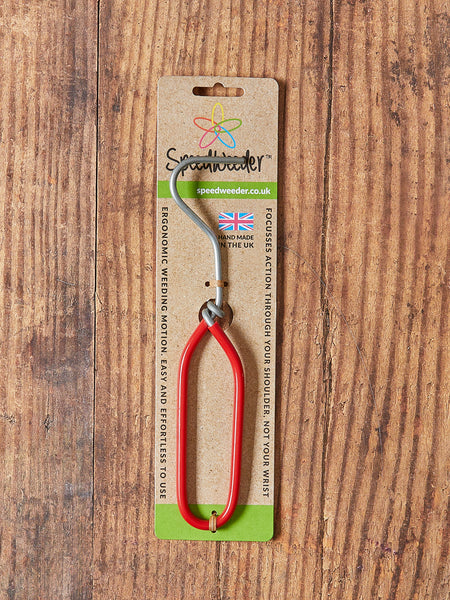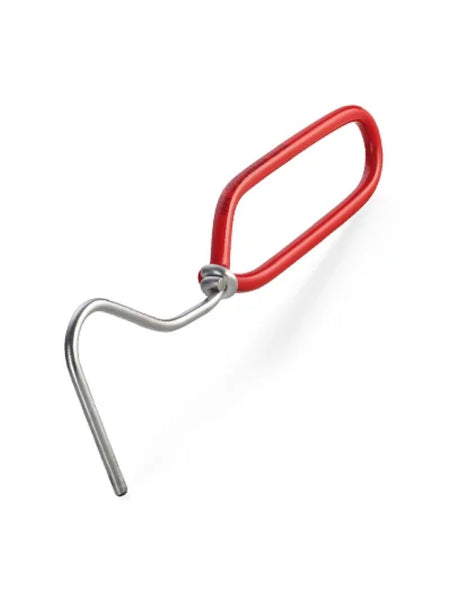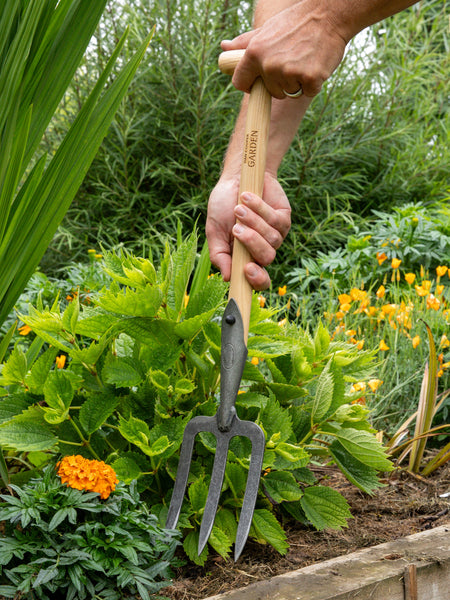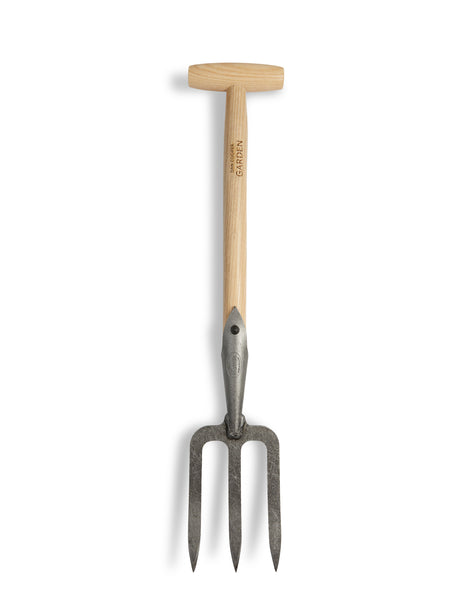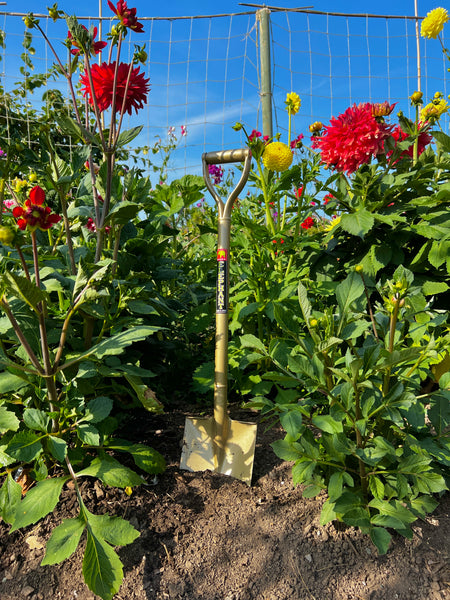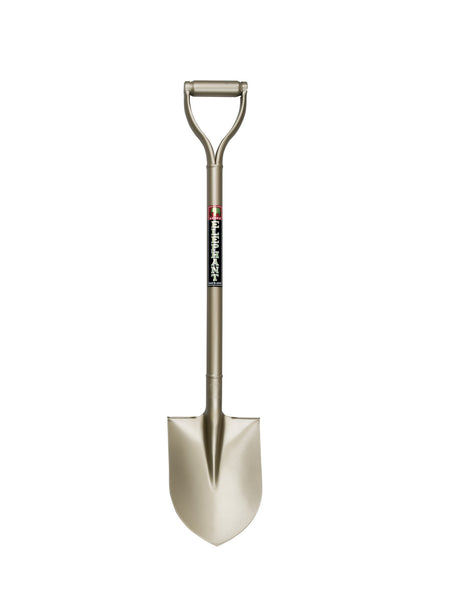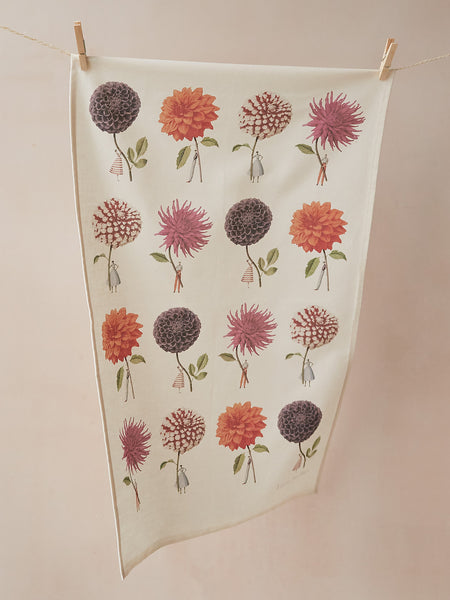Dahlias are among the UK's most beloved garden flowers, blooming profusely from midsummer until the first frosts. Dahlias are generous, flamboyant, colourful plants, quick to grow, easy to propagate, AND they produce excellent cut flowers. With all those outstanding qualities, it’s natural you’ll want to keep them from one year to the next.
Although dahlias originated in the warm climate of Mexico, they have evolved to produce large underground tubers that help them survive if their above-ground parts are munched by animals or killed by freezing weather. That makes them perennials in our temperate climate, meaning their tops will die back before winter and re-emerge in late spring. If you grow dahlias, they were probably purchased as dormant tubers since this is the easiest way to get them from the grower’s field to your garden gate unharmed.
As autumn advances, you’ll notice that your dahlias begin to produce smaller, paler blooms on shorter, weaker stems. These can still be cut and enjoyed right up to the day before the first frost. When that happens — ideally before — you must decide how to ensure your dahlias survive the winter. Here are your options:
1. Leave them in the ground
Technically, dahlias can overwinter successfully outside, planted in the ground, except in the coldest parts of the UK. However, your success rate will depend on soil type, drainage and how cold and wet the winter is. If dahlia tubers sit in frigid conditions for long periods, their plump, water-filled cells may freeze, turning to mush when they thaw. If you garden on heavy clay that’s prone to waterlogging, lifting and storing them is likely to be the best option for you. Here in the South East of England, where the soil is light, chalky and free-draining, we can safely leave ours in situ.
If it’s your first time overwintering dahlias and you’re not sure what course to take, it’s worth asking a gardening neighbour or fellow allotmenteer what they do. Local knowledge always trumps general advice!
It’s also worth noting that tubers planted in the ground may flower 4-6 weeks earlier than those you lift and store.
Top tips for overwintering dahlias outside:
-
When your dahlias start to look scruffy or become blackened by frost, cut them down, leaving a short stump. Clear away any weeds growing near their crowns.
-
If you started your dahlias in pots before planting them out, their tubers may be sitting just below the soil surface, in danger of freezing. If this is the case, cover them with a 20-30cm layer of mulch. This can be old potting compost, straw, or fallen leaves. I’d suggest avoiding anything that gets too wet and soggy, such as manure. Crucially, don’t leave the junction between the tubers and the old stems exposed (the neck), as this is where new shoots will form the following year.
-
If your dahlias are named, push the labels well down into the soil next to the tuber so they won’t get lost: the foxes on our allotment have enormous fun yanking plastic markers out of the ground! Alternatively, draw a little map of your dahlia bed, or take photos when they’re in bloom, as an aide-memoire or backup should the labels go astray.
-
Check your dahlias occasionally, as mulch can be blown, dug up, or washed away over time. You don’t want to see any glimpses of tuber above ground.
-
In spring, protect emerging shoots from slug and snail damage before they appear: spread out any remaining mulch and have deterrents in place no later than the middle of April or early May in the North. Wool pellets work for me, but you can also try crushed shells, broken egg shells, coarse grit and conventional slug pellets if you desire. Dahlias will regrow if nibbled, but you must be vigilant, as once slugs and snails have identified their favourite eatery, they’ll return again and again until there’s nothing left. Be patient, as some dahlias won’t emerge from their winter slumber until June.
If you’re still undecided about leaving dahlias in place, I should stress that lifting them is hard, time-consuming work, and you’ll need somewhere dry, well-ventilated and frost-free to store them for 5-6 months. In the space of a single growing season, some dahlia varieties will produce tubers that fill an entire bucket, and over several years, a whole crate. You will need to dig your dahlias up carefully, remove soil from between the tubers, and check for pests before transporting them to their winter quarters. When wet and muddy, they are heavy. Over winter, you’ll need to check your tubers regularly for signs of mould, rot and dehydration, all of which can render them useless the following year. Then, in spring, you’ll need to start them back into growth somewhere frost-free, or keep them cool enough to prevent them from sprouting, until you can plant them in the ground in early May. Take it from someone who has done this many times - it’s a faff. Unless you plan to take cuttings or have varieties you couldn’t bear to lose, I’d only lift my dahlias if my soil and drainage dictated that I must.
Should you be fortunate enough to have more than one plant of a variety, you could hedge your bets by lifting one as insurance and leaving the rest. Experimentation is the fun part of gardening!
Overwintering dahlias grown in containers
If you’ve grown dahlias in pots, remove any companion plants, such as annuals, before letting the compost dry out completely. Lift the rootballs out of their pots to check for pests such as vine weevil larvae and slugs. If the tuber looks healthy, pop the dahlia back in the pot and place it somewhere dark, dry, and frost-free—a shed, garage, or basement will do just fine. Do not water them. In April, or earlier if you plan to take cuttings, gently knock off the old, dry compost and repot the tuber in fresh, moist compost. Move it to a warm, brightly lit place and only start watering once the first green shoots emerge.

2. Lift and store
Traditionally, experts recommend lifting dahlias immediately after the tops have been blackened by the first frost. This very precise form of advice is offered by gardeners who are constantly on standby for unpredictable events, but most of us aren’t. And it’s not entirely accurate guidance either. Like pumpkins and squashes, dahlia tubers will store better if you give them time to cure in situ. This toughens the tubers’ skin, helping them retain moisture and stay plump whilst dormant. So, by all means, clear the blackened tops of your dahlias as soon as you can, but if the ground isn’t going to freeze imminently, it’s a good idea to leave them for 2-3 weeks before lifting them.
Top tips for lifting and storing dahlia tubers:
-
When cutting away the above-ground parts of your dahlia, leave a 20cm length of stem attached to the tuber. This elongated stump will serve as a handle for transportation and a place to attach a name tag.
-
Dahlia tubers look very much alike, so there will be no hope of identifying a dahlia that’s not labelled until it blooms again. If you’ve already made a plant marker, tie it tightly to the old stem where it can’t slip off. You could also wrap white or coloured plastic tape around the stem and write on that with a permanent marker. If your tubers are very clean, you can write directly on them, as some professional growers do.
-
Dahlia tubers can extend quite a way from the base of the plant. To avoid damaging them, insert your garden fork at least 30 cm from the stem and work around the tuber until it comes loose and you can gently lift it out of the ground. Take care of your back, as they can be heavy!
-
Remove excess soil using your fingers, a brush or a blunt tool. A Speedweeder is extremely helpful for getting among tightly packed tubers. Avoid rough handling or physical damage, including bruising or snapping of the roots and tubers. Sometimes you can’t avoid breaking a few bits off, but any damaged tissue or open wounds can invite infection.
-
Don’t be tempted to wash your tubers—a thin layer of soil on their surface helps prevent them from dehydration. If you have large clods of earth hanging from them, transfer the tubers to your potting shed, let the soil dry naturally, and remove it after a few days.
-
Store your tubers in perforated crates or trays and lightly cover them in sawdust, spent potting compost or vermiculite. You want a relatively dry medium that won’t draw moisture out of the tubers. Don’t store any that look rotten or that belong to a plant that appeared sick in the first place. Place them somewhere frost-free but cool (about 4ºC is enough), dry and dark.
-
It’s a good idea to check your tubers every few weeks to make sure they’re not shrivelling or going mouldy. You should dispose of any that look unhealthy.
-
When you start your dahlias back into growth, it is up to you. If you wish to take cuttings from them and have a heated greenhouse, you might choose to wake them up between January and March. If you want to give your dahlias a head start in the garden, wait until 6-8 weeks before the last frost in your area, then pot them up and keep them somewhere warm and light to resprout. If you wish, you can keep tubers cool and dry until May and plant them straight in the ground, but the risk of dehydration increases the longer you store them.

All methods of overwintering dahlias have risks, and you should expect to lose a small proportion each winter, regardless of how diligent you are. You can use this as an opportunity to try a new variety or to propagate more plants from the tubers that did make it—that’s a subject for another blog post!
Dahlias are survivors, so if you heed my advice and apply a little local knowledge, you’ll keep them blooming beautifully for many years to come—watch out, though: they’re addictive, and you'll soon be adding more to your collection.


